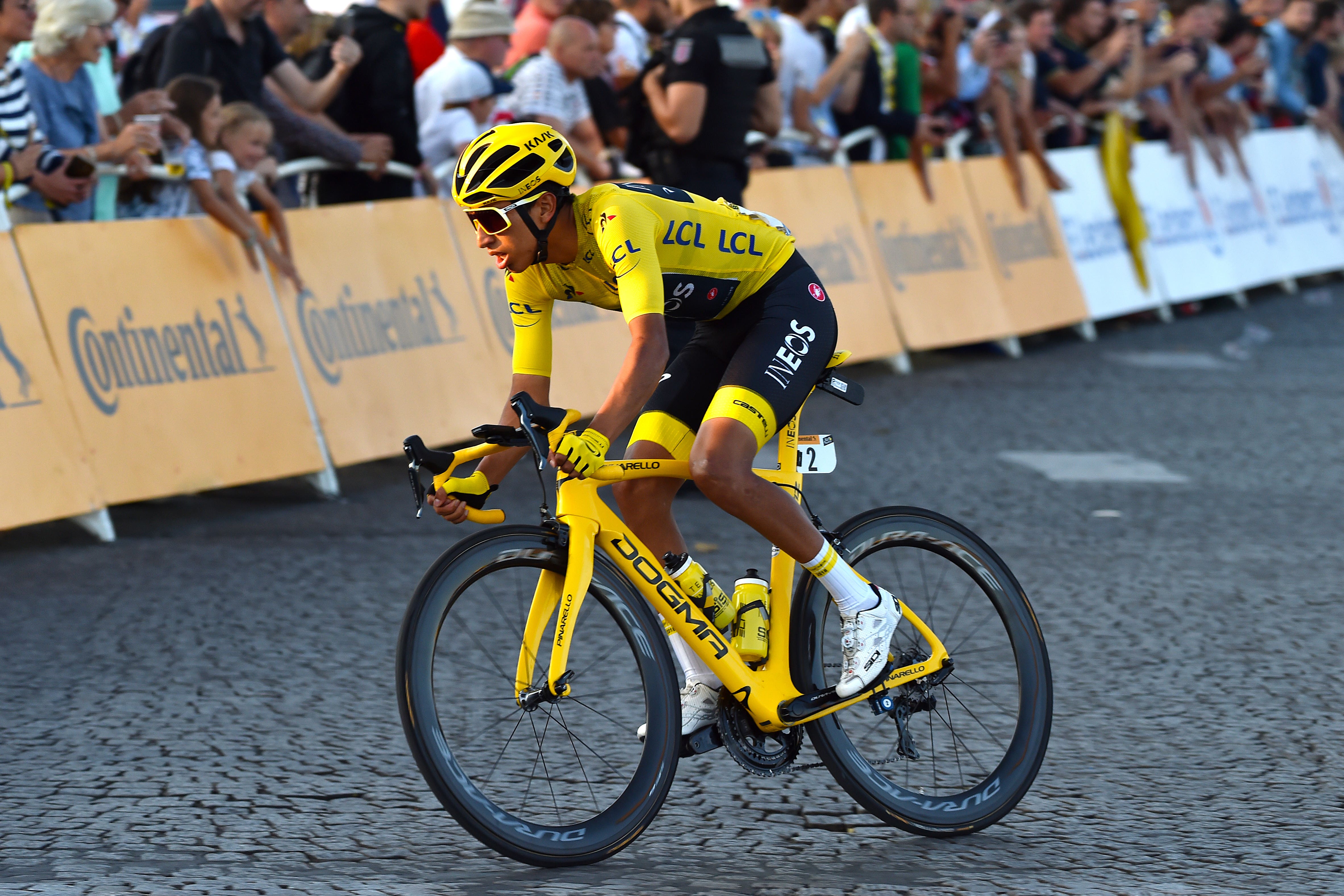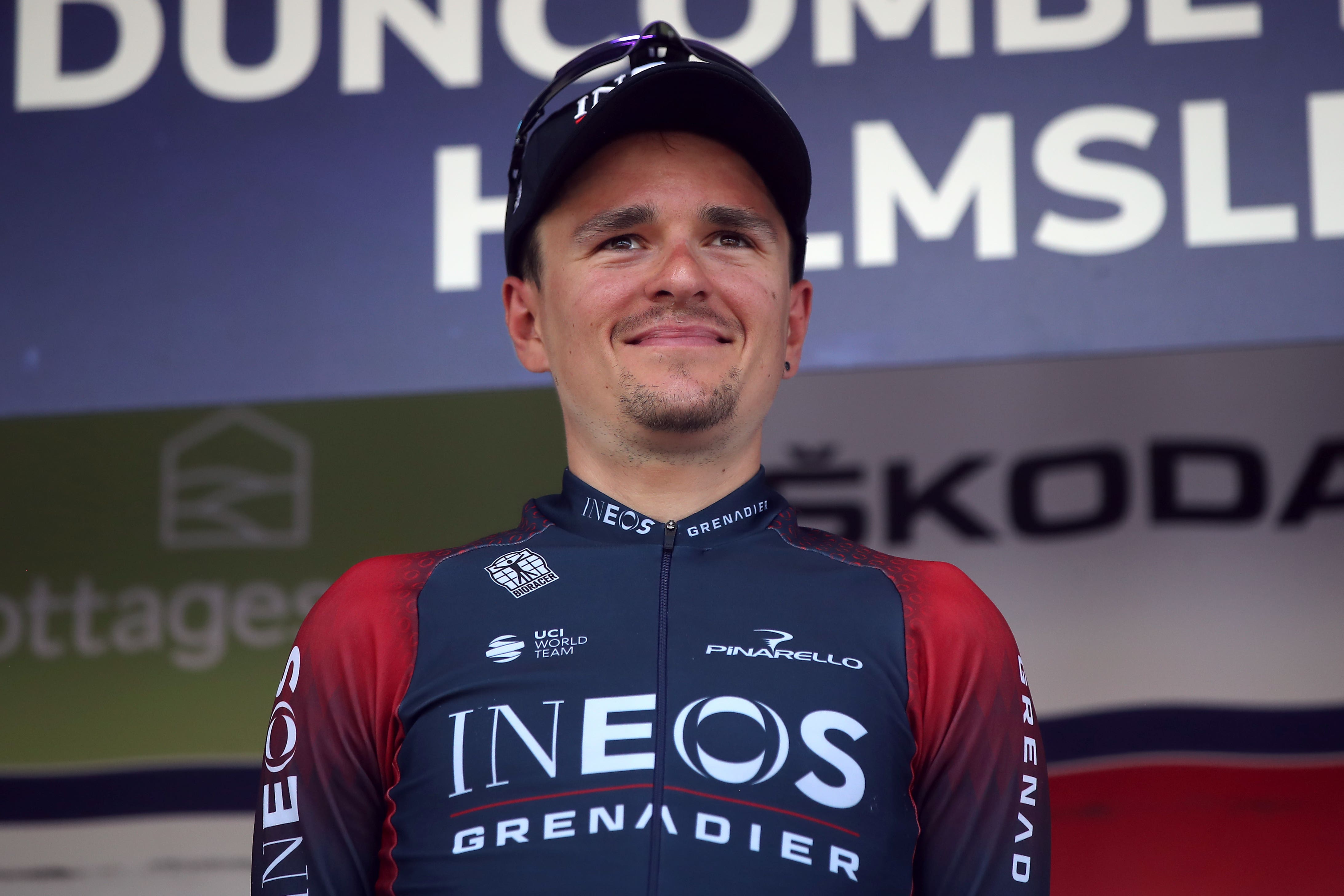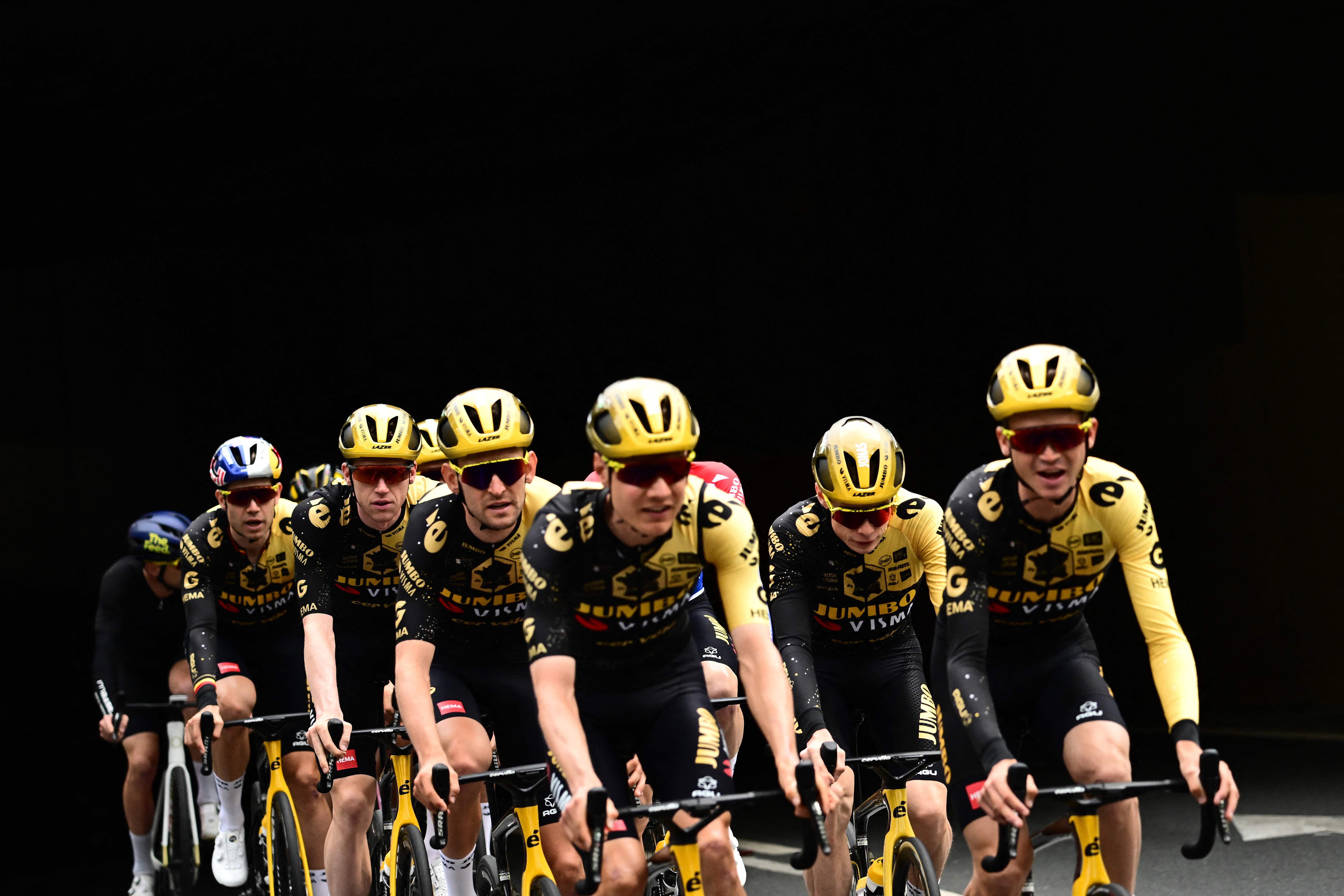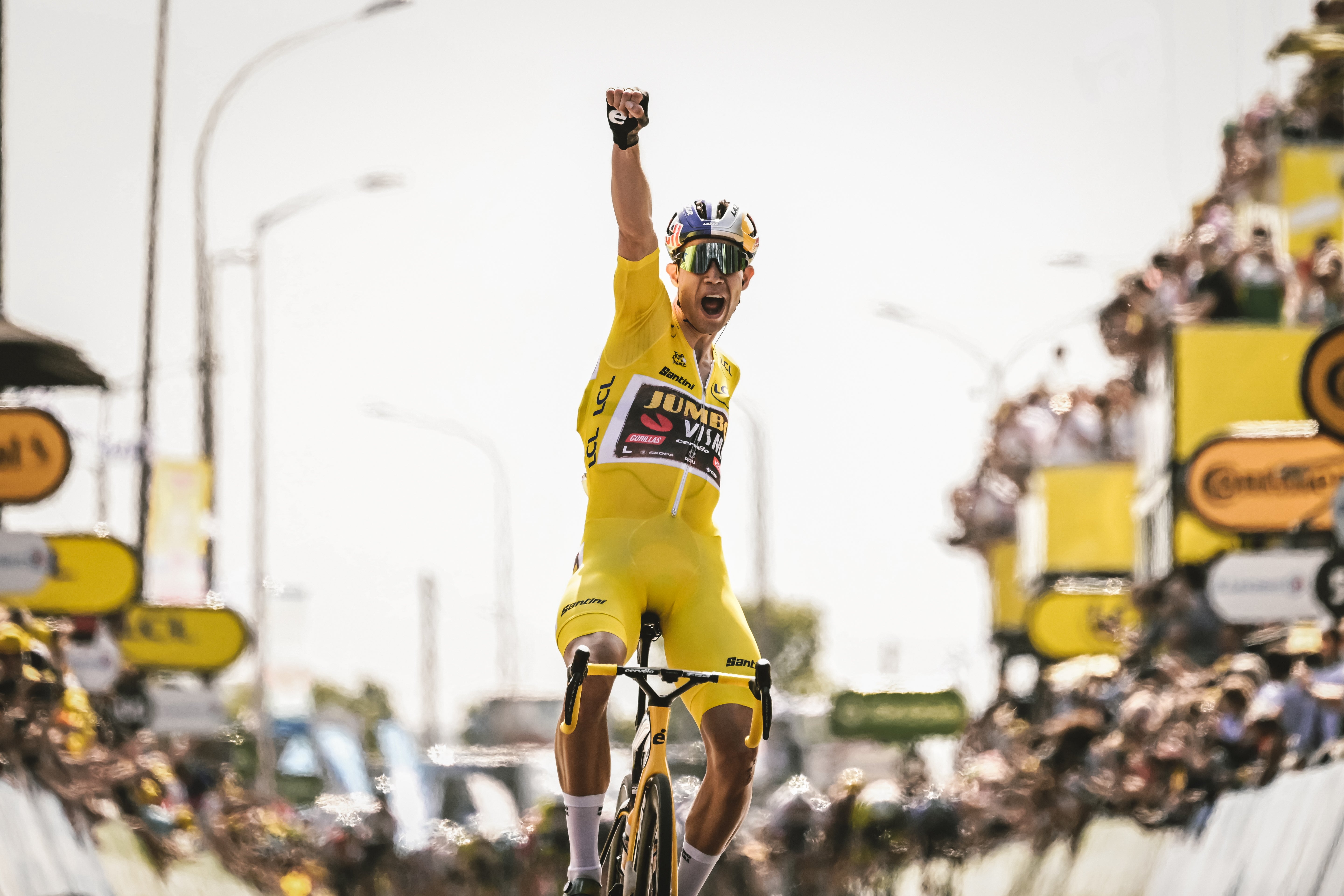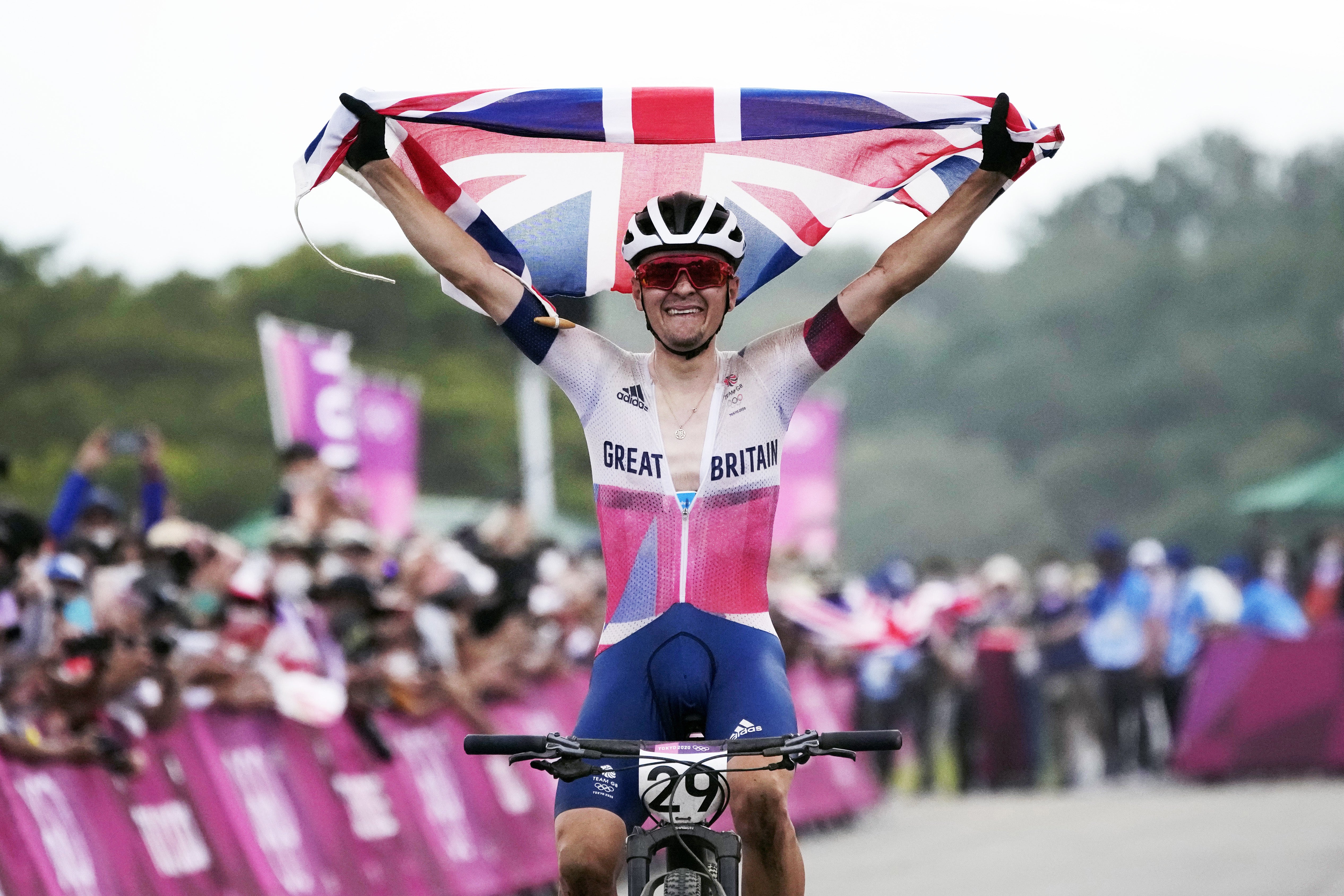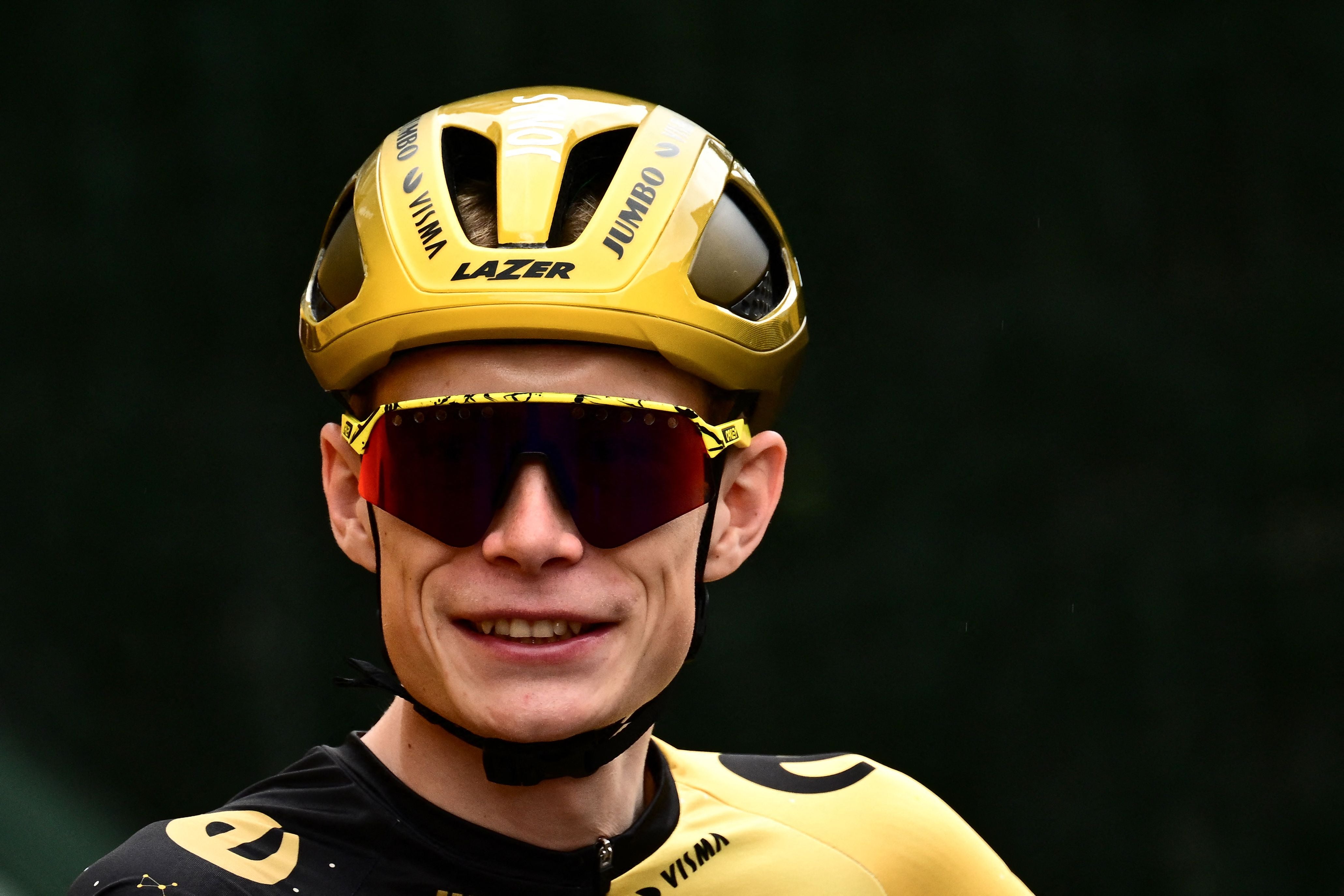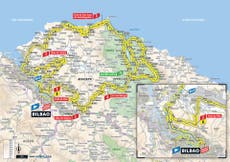How does Tadej Pogacar beat Jonas Vingegaard to Tour de France crown? Attack the from the start
Jonas Vingegaard, behind, and Tadej Pogacar are the outstanding favourites to win the Tour de France
Sign up to our free sport newsletter for all the latest news on everything from cycling to boxing
Sign up to our free sport email for all the latest news
Thanks for signing up to the
Sport email
Another Tour de France, and another instalment of what is becoming one of the great rivalries of modern cycling: Jumbo-Visma vs UAE Emirates, Jonas Vingegaard vs Tadej Pogacar.
A 21-year-old Pogacar dramatically beat Jumbo’s Primoz Roglic in 2020, then finished ahead of Vingegaard in 2021. So they ganged up on him last year and Vingegaard took his crown. After back-to-back triumphs, Pogacar was deposed and finally some weakness was exposed.
Pogacar did what anyone would do: he went away, worked on himself and came back with some bigger boys, namely Britain’s Adam Yates, a support act and understudy in the form of his life coming into this Tour. Vingegaard, meanwhile, arrives as the champion and sole Jumbo leader, with no Roglic by his side. Roglic is resting after winning his first Giro d’Italia in May.
These changes in team personnel will alter the dynamics of the rivalry. Pogacar was helped impressively in the mountains by the American Brandon McNulty last year, but with McNulty taking time to recover from the Giro too, Yates is a more than adequate replacement who thrives on the hard climbs. Vingegaard may benefit from being Jumbo’s outright leader but Roglic was a useful distraction when they brutally attacked and dismantled Pogacar on stage 11 last year – this time there is no foil, no sidekick, no wingman. Vingegaard has a phenomenally strong team around him, but ultimately Pogacar knows exactly who he has to beat, and that is an advantage.
What is so intriguing is their different strengths and styles. Oddly for a man brought up on the flat plains of Denmark, Vingegaard is in his element when the road steepens and disappears into the clouds. He has been peerless over the past two Tours in the Alps and Pyrenees, and showed ominous form when he convincingly won the Criterium du Dauphine earlier this month. “I think he made quite a statement there,” Pogacar told Cycling News. “He showed he could win the race with almost one leg. He’s already looking to be in super, super good shape. So now all eyes are on him, he’s going to be the main character for the Tour.”
Recommended
Jumbo-Visma’s riders take part in a team training session two days prior to the start of the Tour de France, in Bilbao
Vingegaard dismissed this as “mind games”, but Pogacar had a point: if they go toe-to-toe in the highest mountains, the Dane will be almost impossible to beat, and that is why he is rated the slight favourite.
Pogacar’s talents are more rounded, and so it is imperative he makes time on Vingegaard in some of the early mid-mountain stages and harder hilly routes. The first two stages in the Basque country, for example, could open opportunities for Pogacar if he is prepared to be aggressive and test Vingegaard, who will need his teammates like Wout van Aert to help stave off attacks. Lumpy stages like 10 and 12 through central France present more opportunities for Pogacar to attack and take hold of the yellow jersey before they reach the Alps.
Being aggressive shouldn’t be a problem. You will have heard a lot about the innovation of Bazball during this Ashes summer, but Pogacar has been riding that way for years. Chasing down a distant target? Attacking with reckless abandon? Losing with a smile? Brendon McCullum and Ben Stokes have just been playing Pogball.
The biggest doubt around Pogacar is that he comes into the Tour undercooked. A wrist injury scuppered a significant portion of his season, and although he returned recently to win the Slovenian road race and time-trial titles, his preparation has been far from ideal. In that sense it might be Vingegaard, not Pogacar, who wants to strike early in the race and test his rival. Over the next 21 days we will get our answers – whether Pogacar is fully fit, whether he has learnt from last year’s mistakes, whether Vingegaard flourishes or flounders as the reigning champion: heavy is the crown, as Pogacar knows.
“For two years I’ve been defending a Tour title, and that’s a different kind of pressure compared to when you’re attacking,” he said. “This year I have nothing to lose.”
Van Aert vs Van der Poel
Among the many sub-plots of this year’s race is another rivalry, that of Belgium’s Wout van Aert and the Netherlands’ Mathieu van der Poel. The best two all-rounders in the peloton have shared a tense relationship over the past few years. They were meant to face off in last year’s Tour but Van der Poel was exhausted from a tough schedule; this time he has measured his season to perfection and comes to the Tour with several major wins under his belt, many at the expense of Van Aert, whom he beat in a sprint finish at the Cyclo-Cross World Championships.
Van Aert is likely to go for sprint stages when Van der Poel is supporting Alpecin-Deceuninck teammate Jasper Philipsen; Van der Poel is likely to go for hilly stage wins when Van Aert is supporting Jumbo leader Vingegaard. But hopefully there will come a time when both are let off the leash, and we see a duel between two of the most talented riders of this generation.
Wout Van Aert celebrates winning stage four of the Tour de France in 2022
Cavendish chases more history
Mark Cavendish comes into his final Tour aged 38 with a joint-record 34 stage wins to his name, needing only one more to move clear of Eddy Merckx’s tally. Few would have given Cavendish much hope of doing so if it wasn’t for his win on the final day of the Giro d’Italia, and now there is real optimism that he can find a way to win No 35 and leave behind the Tour de France with the most stages in history – a mark that may never be beaten.
Stages three and four will be his first shots at the feat, and there will be as many six bunch sprint finishes in this Tour for Cavendish to attack if he can get all the way to Paris. It would be a fitting end to a spectacular career – not that Cavendish is getting emotional yet. “I know it’s my last one, but it’s still the same, I have a job to do.”
Pidcock’s tactical dilemma
Tom Pidcock is back at his second Tour de France having won sensationally atop Alpe d’Huez last year, making use of his phenomenal handling skills learnt on a mountain bike in Yorkshire to descend the penultimate mountain quicker than anyone else.
He is in a tricky position, with enough climbing strength to be a threat to the general classification that will make him a marked man in the eyes of Pogacar and Vingegaard, and unable to escape them. So to win more stages he may have to deliberately fall back in the overall standings so that they deem him no threat and allow an escape up the road in some of the breakaways. Then again, his descending skills are so superior that rivals may not be able to keep up, even if they want to.
Rod Ellingworth, deputy team principal of the Ineos Grenadiers, sees the 23-year-old as a potential future grand tour winner. “I think he’s still got some work to do to be a contender in the general classification,” Ellingworth said. “I think for me this is playing the long game, it’s a stepping stone towards his dreams and ambitions, and he’s certainly got ambitions at the Tour.”
However Pidcock approaches the race, it will be a fun watch.
Tom Pidcock enjoyed a breakthrough moment with Olympic gold in Tokyo (PA)
An open podium battle
While Vingegaard and Pogacar are expected to fight out the yellow jersey, there is an open race to finish on the podium. Australia’s 2022 Giro d’Italia winner Jai Hindley, Spain’s Enric Mas, rising Danish star Mattias Skjelmose, home favourite David Gaudu, 2019 Giro winner Richard Carapaz and Pogacar’s new teammate Adam Yates are all in the running, while Ineos riders Pidcock and Dani Martinez could also end up high in the general classification. Ultimately it will come down to who can cling on to the wheels of Vingegaard and Pogacar the longest.
Front-loaded route
This year the race begins in Bilbao and explores the Basque country, crossing into France on stage three. From there, the peloton soon heads into the high Pyrenees mountains including the fearsome Col du Tourmalet – the sort of climb usually saved for the finale of the race. That should bring the biggest and best riders to the fore, and so we’ll get an unusually early look at their hands.
Danger casts a shadow
Recommended
The tragic death of Gino Mader, killed in a high-speed crash descending a mountain at the Tour de Suisse earlier this month, has set a sombre tone in the sport and delivered a reminder of the danger these riders face, and the potential consequences of the smallest accident or mistake. EF Education boss Jonathan Vaughters has called for more safety netting along the ridge of dangerous sections, while Pidcock said it will inevitably alter how the Tour is raced.
Ultimately, though, most riders have concluded the same thing: it is an unavoidable part of the sport that cannot be completely eradicated so long as they ride over Europe’s highest mountains.
Source: Read Full Article


